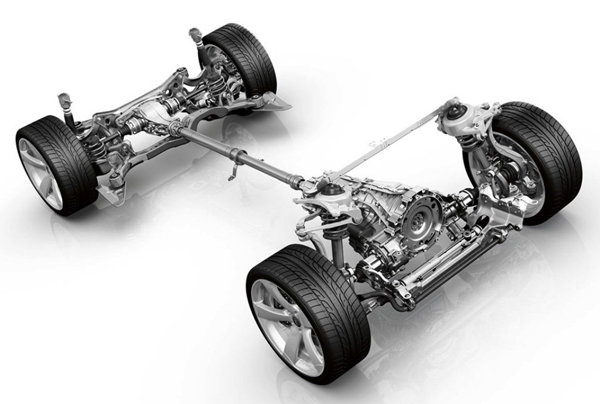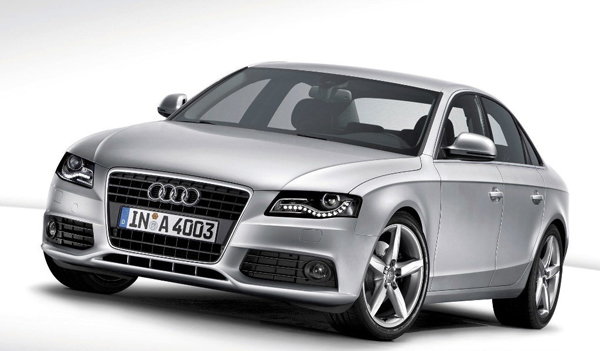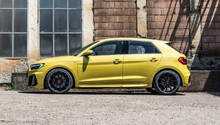Audi A3, A4 B7 and B8: AWD vs. FWD
This article will lay out all the pros and cons of Audi Quattro AWD versus the less complicated, and often less expensive, FWD version of the same car.
This article applies to the Audi A4 B7 and B8 (2005-2015) as well as the A3 (2005-2016).
Let's face it, Audi is synonymous with all wheel drive thanks to their famous Quattro system, which has certainly helped put the automaker on the map. These cutting edge Quattro setups are part of the reason why they have been so successful over the years. But do you really need to spring for an all wheel drive system, or can you save your money and stick with basic, front wheel drive? Most of the larger Audis, like the A6 and A8, come standard with Quattro, but the TT, A3, and A4 are typically available either way. Let's take a look at how the two compare, and talk about a few specifics to the different systems in various cars.
All Wheel Drive or Front Wheel Drive?
All Wheel Drive
All wheel drive, as the name would imply, means that a car's powertrain is capable of providing power to all four wheels. Audi's all wheel drive system, dubbed "Quattro" has been synonymous with the brand since its inception in 1980. Unlike other, conventional systems, Quattro eschews the use of a heavy, traditional transfer box and makes use of a center differential instead. It's a lighter and more efficient setup that allows an even, 50/50 torque split between the front and rear wheels for greater stability. Or, the computer can choose to send more or less power to the front or the back, depending on conditions. Some Audi setups are biased to send most power to the rear wheels, unless slippage is detected, so as to approximate the more neutral handling of a rear wheel drive car.

On the downside, the need to package these extra components under the car means that the gearbox is longer than the one in front wheel drive models. This means more weight up front, which can affect handling during hard cornering, causing understeer, or a front end that pushes and wishes to continue in a straight line in spirited driving. The extra weight, combined with the extra gears and shafts spinning around absorb more power and contribute to worse fuel economy as well. For some people, more parts just means more that can potentially go wrong too, or a car that is more expensive to fix. Though, except for the actual AWD parts, the Quattro and non-Quattro versions of these cars are amazingly alike under the skin.
If you live in an area that experiences a lot of rain or snow, Quattro is typically the better choice due to its ability to provide better handling and acceleration in slippery conditions. Because the car has the ability to send power to the wheels that need them, it can pull you out of a slide better, and of course keep you moving on the slickest roads.
Front Wheel Drive
For the past several generations, Audi has offered the base model of their lower priced cars in front wheel drive. Front wheel drive cars utilize a drivetrain that sends power only to the front wheels, which is (mostly) the norm among modern cars, replacing rear wheel drive. FWD is easier to package, and allows a lower passenger floor, with less of a center hump or transmission tunnel, plus a bigger back seat. FWD provides superior traction in slippery conditions than rear wheel drive cars, as the driven wheels are also the wheels with most of the weight of the motor and transmission over them.
On the down side, having all that weight up front causes problems in the handling department, especially at higher speeds. Front wheel drive cars are prone to "torque steer" under acceleration, as any slight difference in traction between the two driven wheels can cause the car to steer in that direction and fight the driver for control of the wheel. In cornering, the heavy front tend to cause the car to understeer, especially if power isn't applied as you corner to pull the car in the direction the wheels are pointed. Modern chassis design and computers assist with this problem, but only to a point. Another big downside, at least on the Audi A4, is that most FWD versions were equipped with the Continuously Variable Transmission (CVT), which many people don't like, and has been the subject of recalls for reliability issues.

If you care more about cost and fuel economy more than ultimate performance, front wheel drive is probably the better choice for you. Both FWD and AWD handle better than rear wheel drive in slippery conditions, though Quattro does have the advantage there, so let your local climate dictate that decision. If you love to drive fast and enjoy hard cornering (and who doesn't?), AWD is the way to go. It should also be noted that all the faster, more expensive S3, S4 and RS4 variants came exclusively with Quattro, and many of the larger engines and more expensive options came on the Quattro model as well.
Related Discussions
- AWD vs. FWD - AudiWorld
- Quattro vs. FWD - AudiWorld
- Quattro vs. FWD in the Snow - AudiWorld






